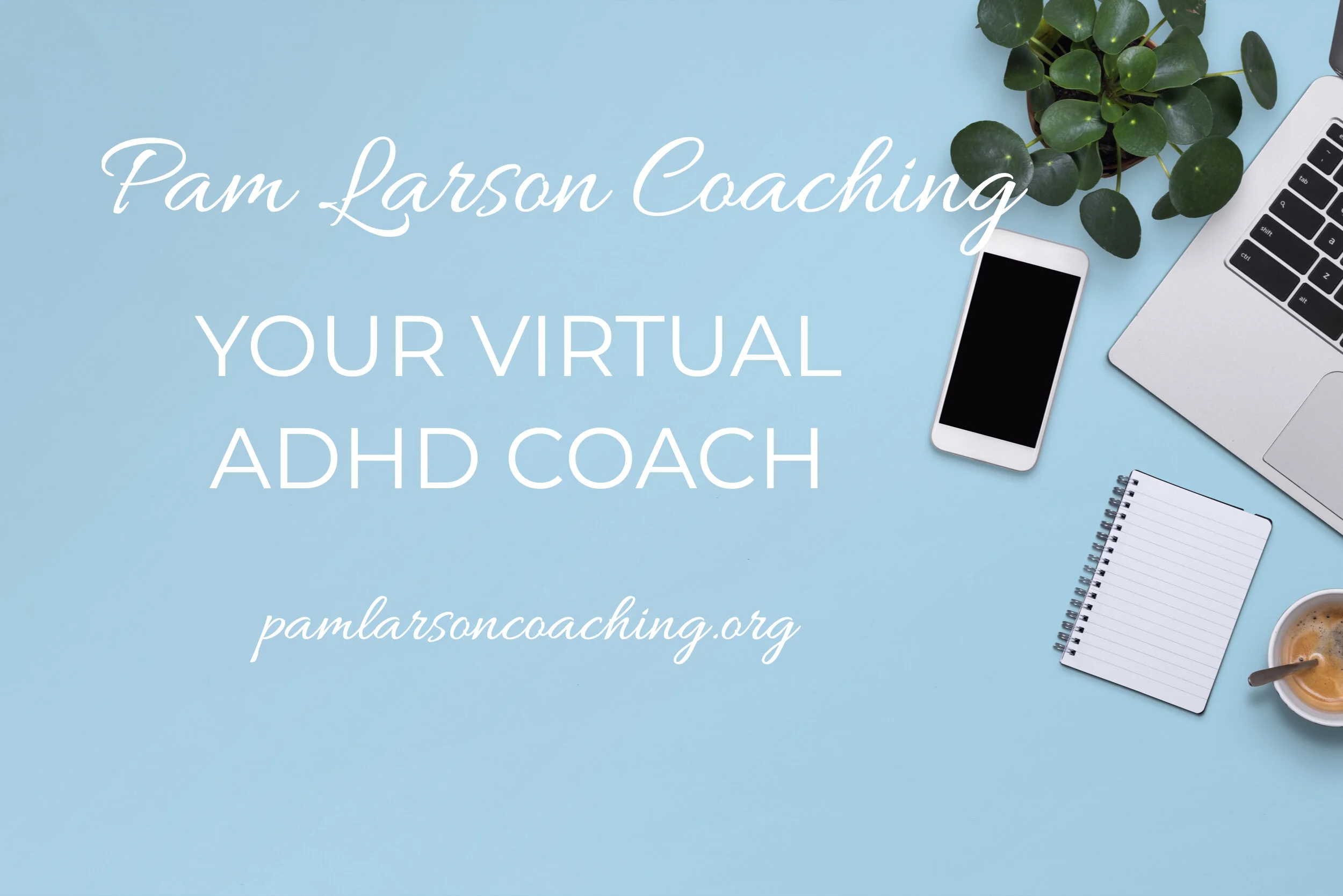Tuesday, January 28th, 2020
Welcome to the leADDership brief
A weekly newsletter for creative and innovative people, like you, with ADHD who want timely, helpful, and interesting resources
for leading and living well with ADHD.
Gratitude & The Power
Of
Shifting Your Perspective
It was a cold and snowy Thursday morning as I sit down in my office to work on the next edition of the leADDership brief. I had planned to write about motivation but the gently falling snow and blanket of pristine snow in my front yard has sent my thoughts in a different direction.
I grew up in Minnesota where we joked about having two seasons: winter and road construction. I have many memories of sledding, ice skating, and building snow forts; school closings and days of playing Monopoly and Tripoly with my brothers, drinking hot cocoa and eating cinnamon toast.
Sure, I have some fond memories
Maybe it's because I was born in southern Texas…
But I never acclimated
I don't like winter
I don't like the cold
I don't particularly like winter activities
I guess I like sweaters so that's something
I'd rather be on a beach, soaking up some vitamin D
Midwestern winters with its seemingly endless gray days, salt covered roads and streets, windchill temperatures at or below zero, muddy snow dragged in doors, and the smell of wet woolen gloves and boots makes me cranky and drains my energy.
Sitting at my desk to write the brief I am cranky and unmotivated, grumpy and uninspired, feeling distracted and stuck in my brain. I don't want to work. The cortisol is building up in my system ready to dump into my bloodstream, and I want to run away from this feeling. I want to do anything but finish what I started.
When I find myself in this space I know I have a choice:
Give in to the mood, lose at least a half day of work and focus, and feel behind for the rest of the weekend
Shift my focus, regain perspective, and settle back in to a productive and satisfying day
One of the easiest, quickest, and most satisfying ways I have found to shift my perspective is to spend a few focused moments on breathing and practicing gratitude. What and who can I be grateful for in the midst of this potential downward spiral?
I have a very dear friend who is one of the most genuine people I know and she regularly practices gratitude as well as expresses her deep gratitude for people, things, and events. She is one my most favorite people to be around. I always leave our time together feeling lighter, hopeful, and inspired. That’s the power of gratitude in the air. She's pretty amazing.
But I digress.
GRATITUDE AND THE BRAIN
The benefits of gratitude, particularly if practiced regularly, are many.
According to this article in Psychology Today :
“One study by a couple of American researchers assigned young adults to keep a daily journal of things they were grateful for (Emmons and McCullough, 2003). They assigned other groups to journal about things that annoyed them or reasons why they were better off than others. The young adults assigned to keep gratitude journals showed greater increases in determination, attention, enthusiasm, and energy compared to the other groups.”
(See attached TED Talk below about this study)
In her article on ADHD and the practice of gratitude, Dr. Kari Miller says this about the neurochemistry of gratitude:
“Gratitude has a direct effect on depression symptoms (the more gratitude you feel, the less depressed you are) and an indirect effect on anxiety (more gratitude leads to improved sleep, which leads to lower anxiety).
Feeling grateful activates regions of the brain associated with the neurotransmitter dopamine. First of all, dopamine allows us to take charge of our attention – to shine a spotlight on the one thing we want to focus on – and ignore other competing demands on our attention.
Dopamine makes movements easier, so more dopamine in our brain allows us to be more fluid and efficient in our movements, including helping us to be more efficient thinkers.
Dopamine is the reward chemical, so when we get an extra dose of it, our brain takes note of where the dopamine came from and actively seeks out the same experience in the future. This makes it much easier to establish a habit! So once you start actively looking for things to be grateful for, your brain will encourage you to continue looking for things to be grateful for because the brain loves to get hits of dopamine.
Another powerful effect of gratitude is that it boosts another neurotransmitter, serotonin. Serotonin improves your overall mood, helping you feel more significant, powerful and self-confident!
Serotonin is also a key player in the ability to go to sleep. The buildup of serotonin throughout the day reaches a threshold and triggers the onset of sleep.
Serotonin is also a key player in the brain’s ability to focus and screen out irrelevant information. Like dopamine, serotonin helps your brain to “shine a spotlight” on what you want to pay attention to.
Surprisingly, it’s not even necessary for you to actually think of things you are grateful for – simply trying to think of things to feel grateful for triggers the release of serotonin! Wow!”
According to Dr. Alex Korb in his book Upward Spiral, the act of “seeking” gratitude has as much if not more benefit than the item you are actually grateful for.
“Trying to think of things you are grateful for forces you to focus on the positive aspects of your life. This simple act increases serotonin production in the anterior cingulate cortex.”
What this means is that just thinking about how or what you could be grateful for sparks brain activity critical to sleep, mood regulation and metabolism.
This is what I activated when I shifted my focus from grumpy, cranky, and negative to grateful.
The simple act of searching for gratitude was beneficial, and it quickly led to a list of people and things I was genuinely and profoundly grateful for in this moment.
GRATITUDE EXPRESSED
As soon as I was aware that the cold winter weather was becoming the Eeyore to my Winnie The Pooh plans I paused what I was doing.
Pushed away from my desk.
Took four deep, cleansing breaths.
Extended self-compassionate to myself, acknowledging the truth that I don’t like winter and it impacts my mood and productivity, this doesn’t make me lazy or stupid or lacking. It just is.
Asked myself what could find to be grateful for in this moment.
Within five minutes I found five things to be genuinely grateful for.
I took photos to remind myself of what I am grateful for and to share with you.
Snow Covered Trees
The view from my living room window is a beautiful panorama of snow covered trees. The snow is still falling, the air is crisp, and it looks like a wonderland back there.
Birds at my feeder
I love to watch the cardinals, finches, doves, and woodpeckers as they eat and twitter away at each other in the garden in front of my office window. Just before taking this picture there were six birds enjoying brunch at the feeder. My shadow scared them away.
Snowblowers
And a husband who got out there and blew the driveway off before he left for work and I need to head to a client meet-up later today.
Cozy Fireplaces
When the snow is falling and the temperatures are dropping on a winter's day in Iowa the best place to curl up and create the latest edition of the leADDership brief is in front of the fireplace!
GRATITUDE'S EFFECTS
It took me about 15-minutes to find gratitude, list what I was grateful for, and take the pictures for the newsletter.
By the time I sat back down to my computer I was experiencing all of the effects of gratitude.
The cortisol was dissipating
The anxiety I was feeling about writing the newsletter was replaced by inspiration and creativity
My mood shifted from gray and aimless to bright, energetic, and inspired
As dopamine was released into my system my brain could focus and filter out the negative
I sat back down and finished the newsletter with a new and inspiring topic to share with you.
PRACTICING GRATITUDE
The next time you are feeling the effects of negativity like brain fog, or distraction, or a lack of inspiration and motivation, or an anxiety driven cortison dump try practicing gratitude and see what happens.
Seven easy steps for practicing gratitude:
Notice that you are feeling negative and the effects of the negativity
Name the negativity and why you feel this way
Give yourself some empathy and compassion
Take four deep cleansing breaths
Ask yourself who and/or what you can be grateful for in this moment...start with three to five "gratitudes"
Personalize and enrich your practice of gratitude:
If you're a visual learner find photos or look for the who/what in your home or office
If you're an auditory learner say it outloud, find a short video or song that expresses your feelings
If you're a kinesthetic learner find a way to interact with the person or thing you're grateful for: tell the person, go and stand outside in the snow and notice what's beautiful, write it down
Breath and scan your body and emotions, notice how you are feeling, what you are thinking---take all the good feelings and all that lovely dopamine and serortonin and get back to what you were doing with renewed energy and focus
Scroll down for some short and inspiring TED Talks about gratitude.
If this has been helpful and you’d like some one-on-one help with your work space contact me today for your complimentary, no strings attached, breakthrough coach call.
Click on the link below to schedule your 60-minute coach call today!
What Else Do You Need To Know?
Coach Pam







